
Many businesses fall at the first hurdle they come across. Not this crew of eyecare professionals, who faced critical business situations and still came out on top. Discover exactly how they did it.
COMEBACK STORY NO. 1
Advanced Eyecare & Vintage Eyewear,
Abilene, TX
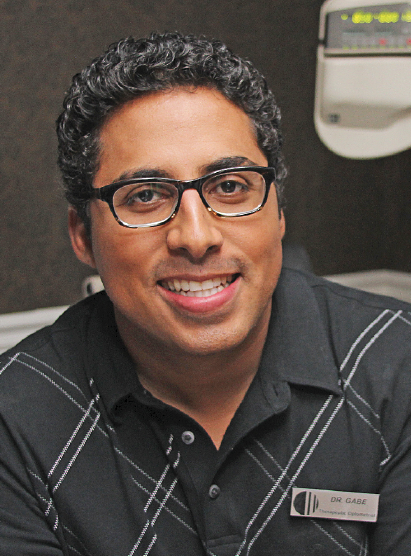
“We were under-billing by way too much — we were not billing what we
were worth.” DR. GABRIEL AVILA
STRATEGY
Sell the right stuff, price the right way
Advertisement
WHY YOU SHOULD
Prices for goods and services go up.
WHY YOU SHOULDN’T
If the quality isn’t
worth it.
How Did Advanced Eyecare Quadruple in Size? By Knowing ITS Worth
Story by Corrie Pelc
When Dr. Gabriel Avila purchased Advanced Eyecare & Vintage Eyewear in Abilene, TX from an optometrist who was looking to move, he saw a lot of potential in the practice. The office was “cosmetically very appealing” as the past owner and his wife had a flair for interior design and gave the practice a vintage look with a contemporary twist.
However, after about five years in practice, the office was only grossing around $300,000 annually. Avila found that, although the practice was focusing on high-end lines, they were not being sold for what they were worth, driving his cost of goods to an unsustainably high level. Besides that, he had a very small staff and a location with limited foot traffic. To be successful, Avila realized he needed to make some changes.
The first change Avila made was to adopt a medical model where prior to a patient’s exam, staff obtains both the vision and medical insurances for a patient. He says this has allowed him to bill medically if necessary, with reimbursements going from $40 for a vision plan office visit not including glasses to as high as approximately $140 for a medical office visit not including additional procedures.
Advertisement
“It allows me to take care of that patient the way I need to when they walk in the door,” Avila explains. “You don’t want patients coming through the door with medical issues and all you have are vision care plans. You’re not going to serve yourself at all if you are only billing out a $40 visit that should be a few hundred dollars.”
Avila also raised the practice’s exam fees — first only $10, then more substantially six months later. “We were under-billing by way too much,” he says. “ We were not billing what we were worth.” Although some patients complained — and a few even left — Avila was able to grow the practice by 8 percent in the first year and has continued to grow between 15 and 20 percent every year since. Now Dr. Avila averages about $355 in revenue per patient.
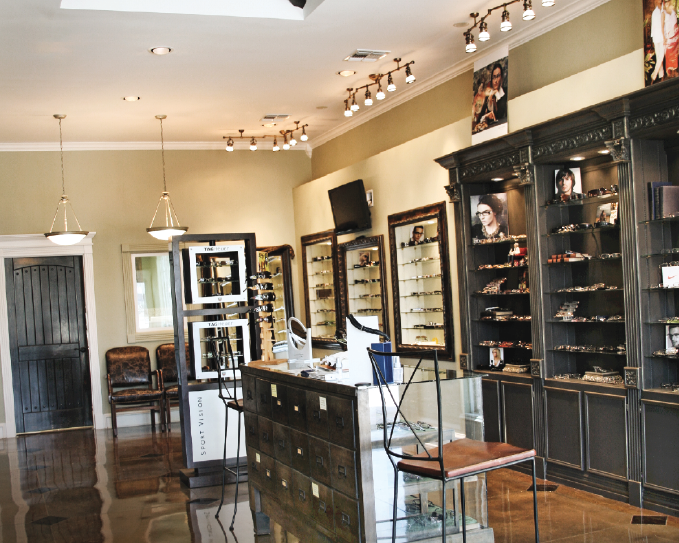
After that change, Avila hired staff, including an optician and office manager, to improve eyewear sales and keep the office running. “You can’t be efficient as a company if you don’t have staff helping out with those kinds of things,” he adds.
In the optical dispensary, Avila raised the price of eyewear frames, decreased the number of high-end lines, and increased his mid-market frame inventory. He also invested in an edger so lenses could be cut inside his practice.
And then, in the biggest change of all, Avila moved his practice in 2010 from its strip mall location to a free-standing building on a busy road feeding into Abilene. The increased visibility and higher traffic worked wonders, boosting practice revenues by 34 percent that year.
Advertisement
Thanks to the changes Avila made, this year his practice is on target to gross $1.5 million. And last year, he opened his second practice in Eastland, TX, through a relationship with an ophthalmologist who was in need of an optometrist to co-manage cataract patients.
So what is Avila’s key piece of advice for other eyecare professionals looking to turn their practice around? Listen to what your patients are telling you — both by their words and their actions. And if you are charging top dollar prices for your services, make sure the quality is just as high. “(Patients) need to know you are providing them a quality service and they will pay you for it,” he says.
COMEBACK STORY NO. 2
Chattanooga EyeCare, Chattanooga, TN

“I had an employee who was painting her toenails up at the front desk when patients were there. And when I confronted the person, she told me she was on break.” DR. LESLIE DRAPER
STRATEGY
Replace old staff with more dependable
new hires
WHY YOU SHOULD
Your practice will be in better hands.
WHY YOU SHOULDN’T
If it’s feasible, it’s probably cheaper to retrain current employees.
How Did Chattanooga EyeCare
Keep Its Doors Open?
BY RETHINKING
THE Hiring Process
Story by Josh Wimmer
Call it an OD’s worst nightmare: Tens of thousands of dollars in insurance claims that weren’t properly filed.
“I really was considering closing the doors,” says Dr. Leslie Draper of Chattanooga EyeCare in Chattanooga, TN. “Because the person doing my insurance and billing wasn’t filing in a timely manner, and that can mean you’re just out that money.”
Draper was only in the second year of running her own practice when she realized how bad things were.
“I had a general understanding [of billing], but the person I had hired had more experience than me, so I thought things were being done that weren’t. I probably should have checked up on it more, but I trusted them to do their job,” she says.
How bad was it? “We had to call the insurance companies and beg them for mercy. We did recover some of it. I would say we probably lost at least $30,000 to $50,000, which is a big deal when you’re small and growing.”
Though the billing issues were Draper’s most glaring problem, they weren’t the only one — and many of her troubles stemmed from employees she couldn’t count on.
“I had an employee who felt it was appropriate to be painting her toenails up at the front desk when patients were there,” she says. “I saw the polish sitting there, and I didn’t see it happening, but of course someone told me later. And when I confronted the person, she told me she was on break and didn’t see anything wrong with it.”
She chuckles. “That’s one thing I guess you’re supposed to cover in your office manual that I never thought to put in there.” Another staff member who was working alone while some IT contractors were in the offices left to run an errand, locking the technicians in and leaving them unsupervised.
“I knew I needed new staff, but I wasn’t really finding any qualified applicants,” Draper says. “So I just had to deal with what I had at the time. I tried to get them some training, but it was too little, too late.”
Draper had hired consultants to help start her practice, but her initial advisers dropped that line of work and went back to running their own practice before she had even opened her doors. She eventually connected with the Power Practice consultancy. Among other things, the group managed to help her get a handle on her hiring and staffing issues.
“They were able to give me questions to ask during interviews, as well as an ad that was a little more specific about what we needed,” she says. “I started having working interviews, where [the applicant] comes in and you maybe have them work at the front desk for a while, or at least role-play and see what their response would be to certain things, whether it’s a phone call or a patient complaint. I could see if their ideas went along with the culture of the office.”
Having reliable employees has allowed Draper to learn to manage her practice by delegating tasks, rather than trying to do everything herself.
“We all do a lot of things, but now I have someone acknowledge they’re going to take care of a specific task and give them the day they’re supposed to follow up,” she says. Simply holding a five-minute all-employee meeting in the morning and another at midday has made a significant difference. “Even small things from the day before can be checked up on.”
She sighs. “Now that we’ve got a few people in there and gotten them trained, we’ve been able to do some of the things we’re supposed to do, and we can take care of our patients.”
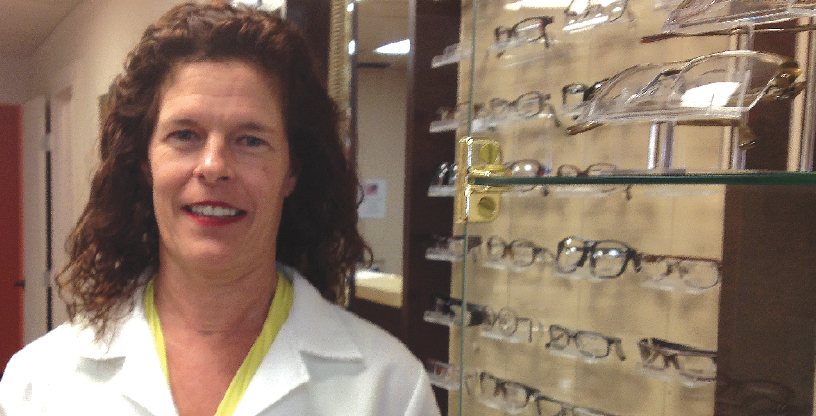
COMEBACK STORY NO. 3
Main Street Optometry
Culver City, CA
“This is the first year where clients have been kind of frustrated, because we’re scheduled
so far out.”
DR. HEIDI FAHRINGER
STRATEGY
Grow slow, grow steady
WHY YOU SHOULD
Success doesn’t happen overnight — you can think more clearly if you make changes gradually.
WHY YOU SHOULDN’T
Some problems might need to be fixed immediately, so make sure your priorities are in order.
How Did Main Street Optometry Go
from Ugly DuckLing to Beautiful Swan?
By Making Smart Choices Slowly
Story by Josh Wimmer
“It was the ugliest practice I had ever seen,” Dr. Heidi Fahringer recalls. But it also was the right fit.
In 2003, Fahringer was just out of optometry school. Having graduated at age 40, she was not particularly interested in working for someone else — especially not the places that usually hired rookies. “A lot of them want you to see patients [and get them out] as quickly as possible, and I really believe in patient care,” she says.
She took what she could get, but remained on the lookout for opportunities. One finally arrived in the form of a tucked-away practice in downtown Culver City, CA, where both she had grown up.
The neighborhood is lively these days, but a decade ago, it was only just starting to be redeveloped, and was still pretty quiet. (The relocation of Sony’s Columbia Pictures offices to the city around that time made a big difference.) And the practice Fahringer found was poky even for the area.
Run by a semiretired OD, it was pulling in around $10,000 to $20,000 a year when she started there, working one day a week, she says. “I saw maybe a couple patients a day,” she says. “Probably less. It was exciting to have a patient.”
The design and decor were likewise not up to speed. Patients entered a tiny waiting room with a little reception window, and all the inventory was hidden in a little dispensary behind the exam room. Avocado green and dark browns comprised the color palette.
Style was not the watchword for glasses frames either, and the practicing doctor sold only one brand of contact lenses. Says Fahringer: “They were still using a typewriter when I came in.”
Still, her new boss was good to her. In less than a year, they had hashed out a plan for Fahringer to buy the practice, and because he owned the building, he could be flexible about her making payments directly to him. “Straight out of school, it would have been hard to get a loan,” she says.
He was skittish about her making changes too quickly, but that was OK, since Fahringer wasn’t in a financial position to do so anyway.
One switch she did make right away was changing the signage outside. “There was none at eye level,” she says. After she switched it, new patients started coming in and telling her they had been walking past for years without knowing it was an optometric practice.
And she marketed the heck out of her new business. “I was involved in every event that I could be in, in the city,” she says. She got on the boards of the local chamber of commerce and her downtown business association. Besides cultivating prospects, those experiences were helpful in other ways.
“It’s great for meeting other businesspeople who can help you,” Fahringer says. Of particular note was one consultant who helped small businesses with human resources. Early on, Fahringer had trouble just getting employees to show up on time.
“But this woman came in weekly and taught me so much about how to manage people,” she says. “It was well worth the expense.”
A free makeover from an industry publication helped too — and so did moving the frames up to the front, not to mention stocking a hipper selection for the fashion-conscious showbiz crowd. Now Main Street Optometry is doing about $700,000 a year.
“This is the first year where clients have been kind of frustrated, because we’re scheduled so far out,” Fahringer says. Which is a beautiful problem to have.
COMEBACK STORY NO. 4
Focused Eye Health & Vision Care
Hackensack, NJ
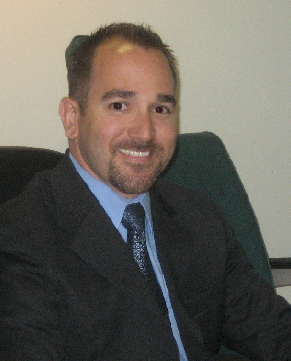
“We were able to use that extra time to talk to patients more, talk to them about their glasses, their particular vision or ocular health problems. You create a better bond.”
DR. MATT ESPERON
STRATEGY
Drop what’s not profitable
WHY YOU SHOULD
Busier isn’t always better.
WHY YOU SHOULDN’T
You can make a wrong change if you haven’t analyzed things well.
How Did Focused Eye Health
& Vision Care Boost Profits?
BY ELIMINATING THEIR
UNPROFITABLE Patients
Story by Corrie Pelc
For Dr. Matt Esperon and his partner, Dr. Paul Berman, they were always under the impression that busier was better and as long as they had patients in the chair, things would be fine.
“But they weren’t fine,” Esperon says about their practice, Focused Eye Health & Vision Care in Hackensack, NJ. “We were having trouble keeping up with our bills, we were behind with a lot of vendors and constantly being put on hold. Most of all, we were all miserable busting our hump to see as many patients as possible.”
The doctors began taking a hard look at their numbers and realized the insurance plans they were accepting were possibly doing them more harm than good. “When we looked at our insurance plans, a lot of them didn’t come close to covering the chair cost with what we paid for the exam,” Esperon says. “We were betting that even though we weren’t getting paid enough for the exam, we would be able to make it up with materials sales and medical exams and treatments, but this also wasn’t happening.”
Fed up with the state of affairs, the doctors started to overhaul their business earlier this year.
One of the first changes the doctors made was to drop a number of the insurance plans they were accepting, starting with their VA eyecare contract. Esperon says that although the contract brought patients to their practice, the exams were barely profitable, and in many cases the patients did not purchase their eyeglasses from the practice. “It felt like a shock and a big loss at the time, but losing those patients was such a big weight off of the practice that we started looking at other plans,” Esperon says.
From there, the doctors decided to drop the other insurance plans that were not helping them be profitable. “Once we dropped them, were were able to concentrate more on a higher service model, and I think that really turned us around,” Esperon says.
At first, Esperon says that seeing less patients was tough to accept. “We weren’t busy — we had a lot more free time and it was a little stressful at first,” he explains. “But we were able to use that extra time to address more patients’ needs, talk to them more, talk to them about their glasses, their particular vision or ocular health problems. You create a better bond with the patients.”
Plus fewer patients equaled less staff, which helped the practice lower expenses. And the extra time has helped the doctors concentrate on other things, such as new ways to market their practice and concentrate more on their customer service. “When you’re not jam-packed all the time and you’re not constantly overwhelmed by the flood of patients, it’s easy to just be nice to the patients,” Esperon says.
And the doctors began cutting down on what they were offering in the optical dispensary and made changes to the options to better suit the needs of their patients. Esperon says they also began taking advantage of the benefits provided by Vision Source for both their frames and contact lens offerings.
Although the doctors have yet to see a revenue increase from these changes, they have decreased debt and expenses by $100,000 and should increase practice profits by up to $80,000 this year. “Switching to a service-first model, which has been a big change in mindset and a challenge, has helped us to really improve our interaction with patients and increase revenue per patient, but it also improved the atmosphere within the practice and made all of us much happier to see our patients,” Esperon says.
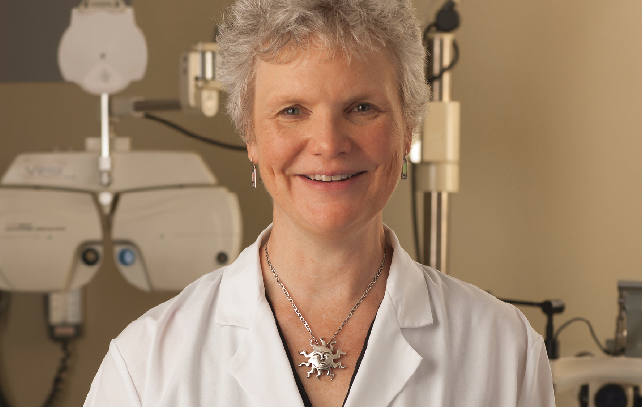
COMEBACK STORY NO. 5
Bayside Vision Center
Valparaiso, FL
“A lot of the things that needed changing required both of us to be on the same page, and because Stan was in a different place in his career, our goals were different.” DR. ANNETTE BRABHAM
STRATEGY
Got it alone
WHY YOU SHOULD
You call all the shots.
WHY YOU SHOULDN’T
You take all the risks.
How Did Bayside Vision Center EMERGE FROM a Slump?
By Losing One OD
Story by Josh Wimmer
Things were never that bad, Dr. Annette Brabham is quick to acknowledge. They just weren’t that great.
In 2000, Brabham began sharing space at Bayside Vision Center, an established OD’s practice in her hometown of Valparaiso, FL. It seemed like an ideal setup — especially right after she abruptly learned, upon returning from vacation, that her previous lease wouldn’t be renewed. Her older colleague, Dr. Stan Peters, was not interested in becoming business partners per se, but had an exam room he never used. Brabham could use it and share some of his employees, equipment and inventory, and they’d both spend less than if either flew solo.
“The relationship worked fine the whole time,” Brabham says. “There was nothing wrong, except that around the time the economy started going bad, we both saw our numbers stagnate.”
Slower business was definitely a challenge, but not an insurmountable one. Brabham and Peters reached out to industry consultants at the Power Practice and soon had plenty of great solutions to increase revenue.
And that, ironically, was the problem.
“We were two separate practices under one roof,” Brabham says. “So it was hard to implement a lot of the suggestions, because there were two bosses. A lot of the things that needed changing required both of us to be on the same page, and because Stan was in a different place in his career, our goals were different.”
There were no big arguments — Peters was just set in his ways and, reasonably enough, not inclined to make major changes or investments when he knew retirement was fast approaching.
“It was also complicated because some employees worked for both of us, some worked for him, and some for me,” Brabham says. “Making uniform changes across both practices was difficult.”
It could have turned into a stalemate for the next few years, but the more Peters thought about it, the more he realized he didn’t have to wait so long.
“He decided to retire early and approached me to buy him out,” Brabham says. “It was a bit ahead of schedule. But after running some numbers, I realized that from a money standpoint, it was a no-brainer.”
Peters retired at the start of this year, and that gave Brabham the opportunity to start putting her fresh ideas to work. She implemented weekly staff meetings and started emphasizing customer service. In keeping with that new philosophy, the practice now uses an online patient portal to make it easier to fill out paperwork and make appointments.
“That’s been a big help,” she says. “It’s a lot smoother for new patients to have their paperwork filled out ahead of time. They don’t have to sit and fill out forms in our waiting area.”
Brabham also redecorated — “The office used to have kind of a 1980s vibe,” she notes — and the aesthetic update has garnered positive response from patients.
And it turns out having one less body in the building has made her work easier in a more practical sense, too.
“One thing that’s been a big help is just the efficiencies I’ve been able to implement now that I’ve got two exam rooms to myself and a private office,” she says. Before, her office space was in her exam room, which meant she ended up handling almost everything, rather than assigning a technician to work with patients. “It was great sharing space because of the low overhead. But now I’m much more efficient seeing patients. I can spend more quality time with them, as opposed to just gathering data.”